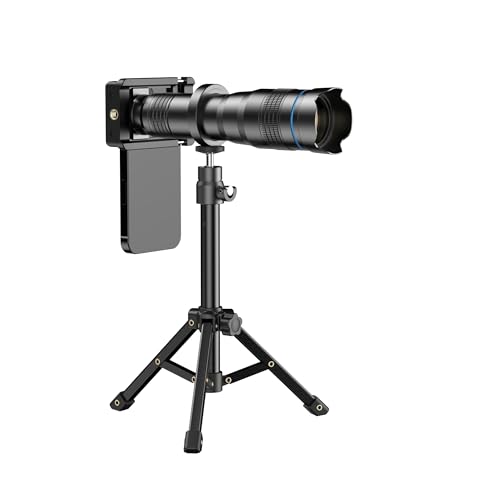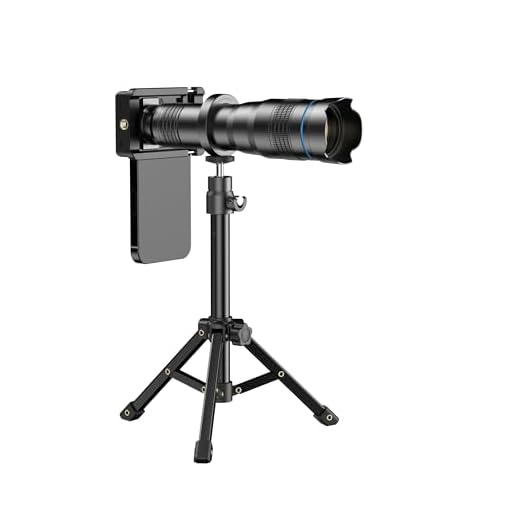




When it comes to smartphone photography, the debate between Android and iPhone users is never-ending. One common complaint from iPhone users is that photos taken by Android phones often look inferior in quality. But why is that?
One possible reason is the difference in image processing algorithms used by the two operating systems. Apple’s iOS has been praised for its image processing capabilities, producing photos with vibrant colors and sharp details. On the other hand, Android’s image processing algorithms may not be as refined, resulting in photos that appear less impressive when viewed on an iPhone.
Another factor to consider is the hardware differences between Android and iPhone cameras. Apple designs its own camera sensors and lenses, optimizing them to work seamlessly with the iOS software. In contrast, Android phones come from a variety of manufacturers, each with their own camera hardware specifications, which may not always be as optimized for image quality.
What causes android camera quality to appear poor on iPhone
When comparing the camera quality of Android devices to iPhones, there are several factors that may contribute to the perception that Android cameras look bad on iPhones. Here are some reasons:
1. Different Camera Hardware
Android smartphones and iPhones use different camera hardware components, such as sensors, lenses, and image processing algorithms. These hardware differences can result in variations in image quality, color reproduction, and sharpness between devices.
2. Software Optimization
Apple is known for its tight integration of hardware and software, which allows iPhones to deliver consistent and high-quality camera performance. Android devices, on the other hand, run on a variety of software versions and user interfaces developed by different manufacturers, leading to inconsistencies in camera optimization and performance.
| Factors | Android Cameras | iPhone Cameras |
|---|---|---|
| Hardware | Varies among manufacturers | Consistent and optimized |
| Software | Diverse software versions | Tightly integrated |
| Image Processing | May lack optimization | Optimized for quality |
Understanding the differences in camera technology
When comparing the camera quality of Android and iPhone devices, it’s important to understand the differences in camera technology that contribute to the varying results. Both Android and iPhone cameras have their strengths and weaknesses, which can affect the overall image quality.
One key factor to consider is the sensor size of the camera. Generally, larger sensor sizes allow more light to enter the camera, resulting in better image quality, especially in low-light conditions. Android devices often have a wide range of sensor sizes, which can impact the quality of photos taken.
Additionally, the image processing algorithms used by Android and iPhone cameras can vary significantly. These algorithms play a crucial role in image sharpening, noise reduction, and color accuracy. Differences in image processing can lead to variations in image quality and overall aesthetics.
| Camera Feature | Android | iPhone |
|---|---|---|
| Sensor Size | Varies widely | Consistently good |
| Image Processing | Diverse algorithms | Consistent and refined |
Ultimately, the differences in camera technology between Android and iPhone devices contribute to the varying camera quality experienced by users. Understanding these differences can help users make informed decisions when choosing a smartphone based on camera performance.
Impact of Software Optimization on Image Quality
When comparing the image quality of Android cameras on iPhones, one crucial factor to consider is the software optimization implemented by each operating system. Both Android and iOS have their own image processing algorithms and optimizations that can significantly impact the final output.
Android devices often vary in terms of hardware specifications and camera sensors, leading to inconsistencies in image quality. However, the software optimization plays a crucial role in enhancing the image quality by fine-tuning factors such as color reproduction, dynamic range, noise reduction, and sharpness.
iPhones, on the other hand, are known for their excellent image processing capabilities due to Apple’s tightly integrated hardware and software ecosystem. The iOS image processing algorithms are optimized to deliver consistent and high-quality results across different iPhone models.
Therefore, the difference in image quality between Android cameras and iPhones can be attributed to the software optimization strategies employed by each platform. While Android devices offer a wide range of camera options, the overall image quality may vary based on the level of software optimization implemented by the manufacturer.
Hardware limitations affecting camera performance
When comparing android cameras to iPhone cameras, one key factor that can affect the quality of the images is the hardware limitations of the camera components. Android phones often come with a wide range of camera sensors and lenses, but the quality of these components can vary significantly between different models and manufacturers.
Additionally, the image processing algorithms used by different Android phones may not be as optimized or advanced as those used by Apple in iPhones. This can result in lower-quality images, especially in challenging lighting conditions or when taking photos in low light.
Furthermore, the size and resolution of the camera sensor in Android phones may not be as high as those found in iPhones, which can impact the overall image quality and clarity. The lack of optical image stabilization in some Android phones can also lead to blurry images or distorted videos, especially when capturing moving subjects or in shaky conditions.
Overall, the hardware limitations of Android cameras, including the quality of the camera components, image processing capabilities, sensor size, and optical image stabilization, can all contribute to the perceived lower quality of images when compared to iPhone cameras.
The role of sensor size in capturing detailed images
When it comes to capturing detailed images, the sensor size of a camera plays a crucial role. The sensor is the part of the camera that converts light into digital information, and its size directly affects the amount of light that can be captured and the level of detail in the final image.
Smaller sensor size
Cameras with smaller sensors, such as those found in most Android phones, tend to struggle in low-light conditions and often produce images with less detail. This is because smaller sensors have less surface area to capture light, leading to more noise and lower image quality.
Larger sensor size
In contrast, cameras with larger sensors, like those in many high-end smartphones such as the iPhone, can capture more light and detail, especially in challenging lighting situations. Larger sensors also allow for greater depth of field and better dynamic range, resulting in sharper and more vibrant images.
Importance of Lens Quality for Sharp and Clear Photos
When it comes to capturing high-quality photos, the lens quality plays a crucial role in determining the sharpness and clarity of the images. The lens is responsible for focusing the light onto the camera sensor, which ultimately affects the sharpness, detail, and overall quality of the final image.
A high-quality lens with advanced optical elements can help reduce distortion, chromatic aberrations, and other optical imperfections that can degrade image quality. A good lens also allows for better light transmission, resulting in brighter and more vibrant photos.
Factors that Affect Lens Quality:
- Optical Glass Quality: The type of glass used in the lens elements can greatly impact image quality.
- Number of Lens Elements: More lens elements can help correct optical aberrations and improve image quality.
- Coatings: Anti-reflective coatings on lens elements can reduce flare and ghosting, resulting in clearer photos.
Overall, investing in a camera with a high-quality lens can make a significant difference in the sharpness and clarity of your photos, whether you’re using an Android device or an iPhone.
Color rendering differences between Android and iPhone cameras
One of the reasons why Android cameras may look bad on iPhones is due to the differences in color rendering between the two platforms. Android devices tend to have a more saturated and vibrant color profile, which can sometimes appear unnatural or overly vivid when viewed on an iPhone screen. On the other hand, iPhones are known for their more natural and accurate color reproduction, which can make images from Android devices look less appealing or even “washed out” in comparison.
Factors influencing color rendering
Several factors contribute to the color rendering differences between Android and iPhone cameras, including the specific image processing algorithms used by each platform, the quality of the camera sensors, and the display calibration of the devices. These factors can result in variations in color saturation, contrast, and white balance, leading to discrepancies in how colors are represented in photos taken with Android and iPhone cameras.
Overall, the color rendering differences between Android and iPhone cameras can impact the visual consistency and quality of images shared between the two platforms, highlighting the importance of understanding and managing these differences for optimal viewing experience.
Effects of image processing algorithms on final results
Image processing algorithms play a crucial role in determining the final quality of images captured by smartphone cameras. These algorithms are responsible for enhancing colors, adjusting exposure, reducing noise, and improving overall image sharpness.
When comparing the image quality between Android and iPhone cameras, one of the key factors to consider is the image processing algorithms used by each platform. Different manufacturers may implement their own unique algorithms, leading to variations in color reproduction, dynamic range, and overall image quality.
Color reproduction:
- Image processing algorithms can affect the way colors are rendered in photos. Some algorithms may produce more vibrant and saturated colors, while others may aim for a more natural and true-to-life color representation.
- Users may prefer the color reproduction of one platform over another based on personal preferences and the intended use of the images.
Noise reduction and sharpness:
- Image processing algorithms also play a role in reducing noise in images, especially in low-light conditions. The level of noise reduction applied can impact the overall sharpness and detail of the final image.
- Some algorithms may prioritize noise reduction, leading to softer details, while others may focus on preserving sharpness at the expense of introducing more noise.
Overall, the image processing algorithms used by Android and iPhone cameras can significantly influence the final results. Understanding how these algorithms work and their impact on image quality can help users make informed decisions when choosing a smartphone camera.
Ways to improve android camera performance when viewed on iPhone
When viewing photos taken with an Android camera on an iPhone, there are a few ways to improve the overall quality and appearance of the images:
| 1. Use high-quality camera apps: | Consider using third-party camera apps on your Android device that offer advanced features and settings for capturing better photos. |
| 2. Adjust camera settings: | Experiment with different camera settings such as exposure, white balance, and resolution to achieve better results. |
| 3. Clean the camera lens: | Make sure the camera lens on your Android device is clean and free from smudges or dirt that could affect image quality. |
| 4. Avoid digital zoom: | Avoid using digital zoom on your Android camera as it can result in pixelated and low-quality images when viewed on other devices. |
| 5. Edit photos: | Use photo editing apps to enhance and improve the appearance of your photos before sharing them with others. |






